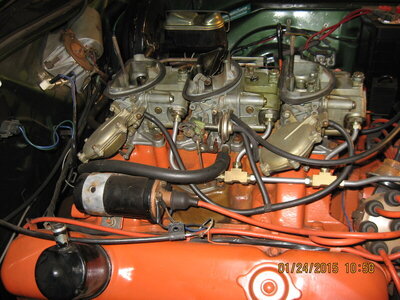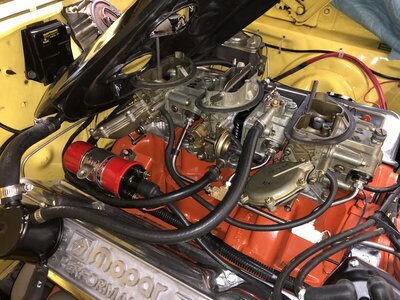racinguy25
Member
I am having trouble with the center carb on my 70 Superbird 6 barrel. These is a small valve on the top of it that has a piece of linkage that pushes it down. 'Sometimes' it leaks gas, it just bubbles out of it. I just discovered this and am lucky I haven't had a fire yet. This valve (sorry I don't know the name of it) has an outlet about 2 inches over, that on my car has a black plasitc cap on it. The cap was there when I bought the car, but I suspect the leak is caused by the lack of a place for the fuel to go. Question, should there be a hose on this outlet and if so where does it run to? I am pointing a screwdriver at the valve and you can see the capped outlet,3/8" hose,
 a couple of inches past the valve.
a couple of inches past the valve.



















